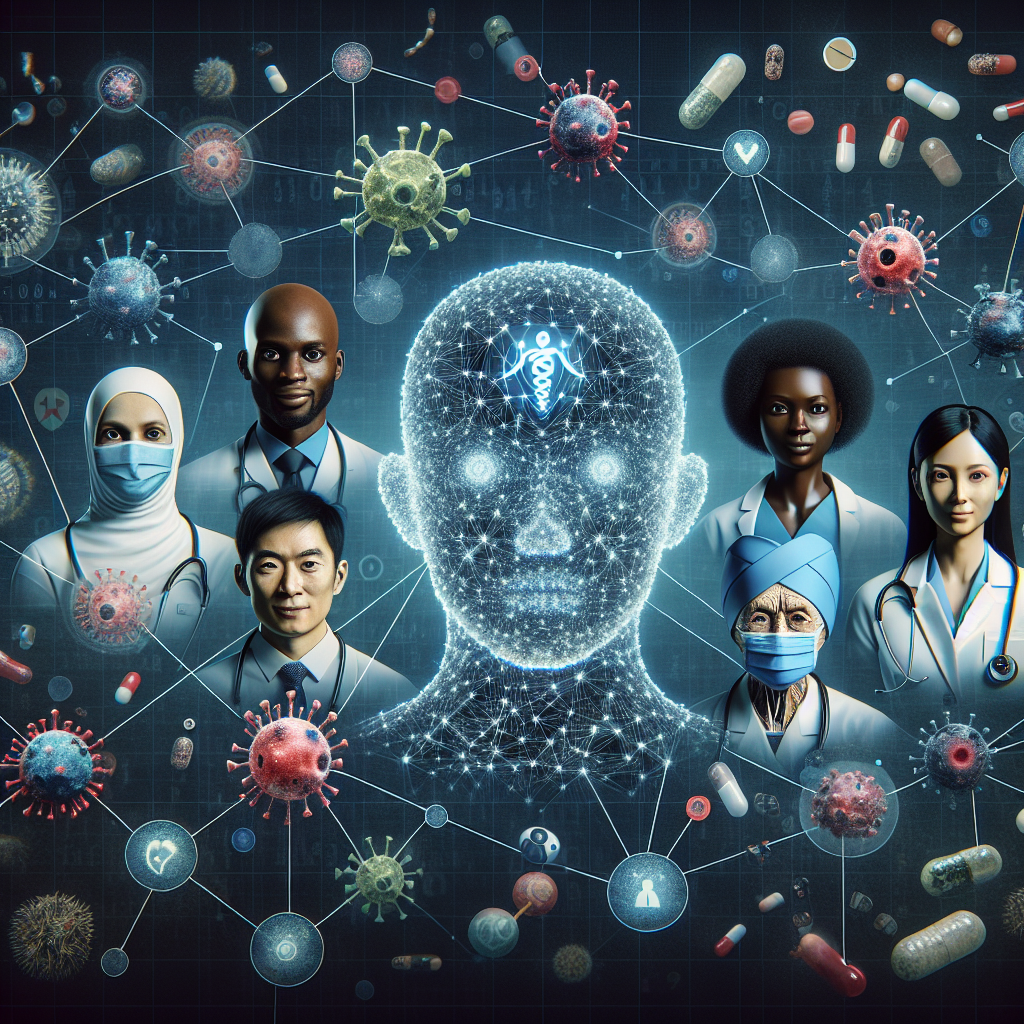Artificial Intelligence (AI) has the potential to revolutionize the field of public health by enhancing disease prevention efforts and improving healthcare outcomes. However, the use of AI in public health also comes with a set of risks and challenges that need to be carefully considered and addressed. In this article, we will explore the risks of AI in public health, with a focus on its impacts on disease prevention.
Risks of AI in Public Health
1. Data Privacy and Security Concerns: One of the primary risks associated with AI in public health is the potential for data privacy and security breaches. AI systems rely on large amounts of data to make accurate predictions and recommendations, which raises concerns about the privacy of sensitive health information. If this data falls into the wrong hands, it could be used for malicious purposes or to discriminate against individuals based on their health status.
2. Bias and Discrimination: Another risk of AI in public health is the potential for bias and discrimination in decision-making. AI algorithms are only as good as the data they are trained on, and if this data is biased or incomplete, it can lead to discriminatory outcomes. For example, AI systems may inadvertently perpetuate existing healthcare disparities by prioritizing certain groups over others, or by making inaccurate assumptions based on demographic factors.
3. Lack of Transparency and Accountability: AI systems are often complex and opaque, making it difficult for researchers, policymakers, and the public to understand how decisions are being made. This lack of transparency can lead to a lack of accountability, as it may be challenging to determine who is responsible for errors or biases in the system. Additionally, without clear guidelines for oversight and regulation, AI in public health may be deployed without proper safeguards in place.
4. Overreliance on AI: While AI has the potential to enhance disease prevention efforts, there is a risk of overreliance on technology at the expense of human judgment and expertise. It is essential to strike a balance between the use of AI tools and the knowledge and experience of healthcare professionals to ensure that decisions are made in the best interest of patients and communities.
5. Ethical Dilemmas: The use of AI in public health raises a host of ethical dilemmas, such as how to balance individual privacy with the need for data sharing, or how to prioritize resources and interventions based on AI predictions. These ethical considerations must be carefully navigated to ensure that AI is used responsibly and in accordance with ethical principles.
Impacts on Disease Prevention
Despite these risks, AI has the potential to significantly impact disease prevention efforts in public health. Here are some of the ways in which AI can enhance disease prevention:
1. Early Detection and Diagnosis: AI algorithms can analyze large datasets of clinical and epidemiological data to identify patterns and trends that may indicate the early stages of a disease outbreak. By detecting outbreaks early, public health officials can implement targeted interventions to prevent the spread of disease and protect the health of the population.
2. Personalized Medicine: AI can help healthcare providers deliver personalized treatment plans based on individual genetic, environmental, and lifestyle factors. By tailoring interventions to the specific needs of each patient, AI can improve health outcomes and reduce the risk of disease progression.
3. Predictive Analytics: AI can analyze population-level data to predict the likelihood of disease outbreaks, identify high-risk populations, and inform resource allocation decisions. By using predictive analytics, public health officials can prioritize interventions and allocate resources more effectively to prevent the spread of disease.
4. Behavioral Interventions: AI can be used to develop targeted behavioral interventions that promote healthy behaviors and prevent the onset of chronic diseases. By analyzing individual behaviors and preferences, AI can provide personalized recommendations for diet, exercise, and other lifestyle factors that can reduce the risk of disease.
5. Real-time Monitoring: AI can monitor trends in disease prevalence and transmission in real-time, allowing public health officials to respond quickly to emerging threats. By tracking changes in disease patterns and risk factors, AI can help prevent outbreaks and minimize the impact of infectious diseases on the population.
FAQs
Q: What steps can be taken to mitigate the risks of AI in public health?
A: To mitigate the risks of AI in public health, stakeholders should prioritize data privacy and security, address bias and discrimination in AI algorithms, promote transparency and accountability in decision-making, and ensure that AI is used in conjunction with human expertise and judgment.
Q: How can AI be used responsibly in public health?
A: AI can be used responsibly in public health by adhering to ethical guidelines, promoting transparency and accountability in decision-making, ensuring that AI algorithms are fair and unbiased, and involving stakeholders in the design and implementation of AI systems.
Q: What role do policymakers play in regulating AI in public health?
A: Policymakers play a crucial role in regulating AI in public health by developing guidelines for data privacy and security, promoting transparency and accountability in AI systems, and ensuring that AI is deployed in a way that aligns with ethical principles and public health goals.
In conclusion, the use of AI in public health has the potential to transform disease prevention efforts and improve healthcare outcomes. However, it is essential to carefully consider and address the risks associated with AI, including data privacy and security concerns, bias and discrimination, lack of transparency and accountability, overreliance on technology, and ethical dilemmas. By taking steps to mitigate these risks and promoting responsible use of AI in public health, stakeholders can harness the power of technology to protect and improve the health of populations around the world.

